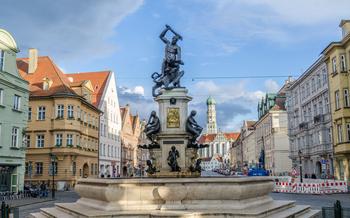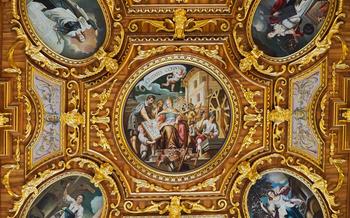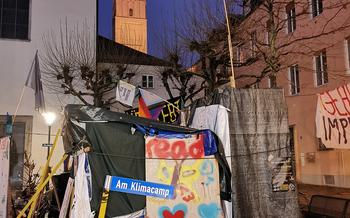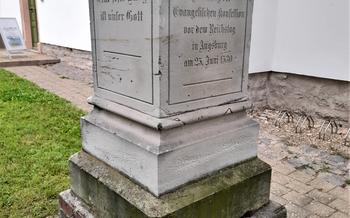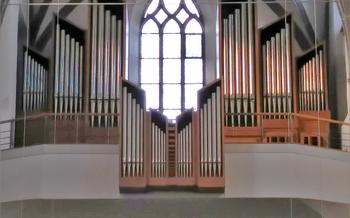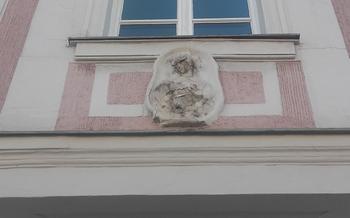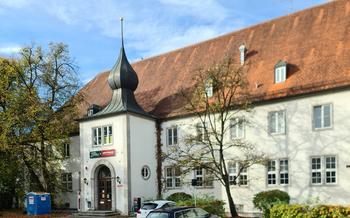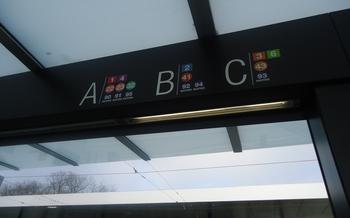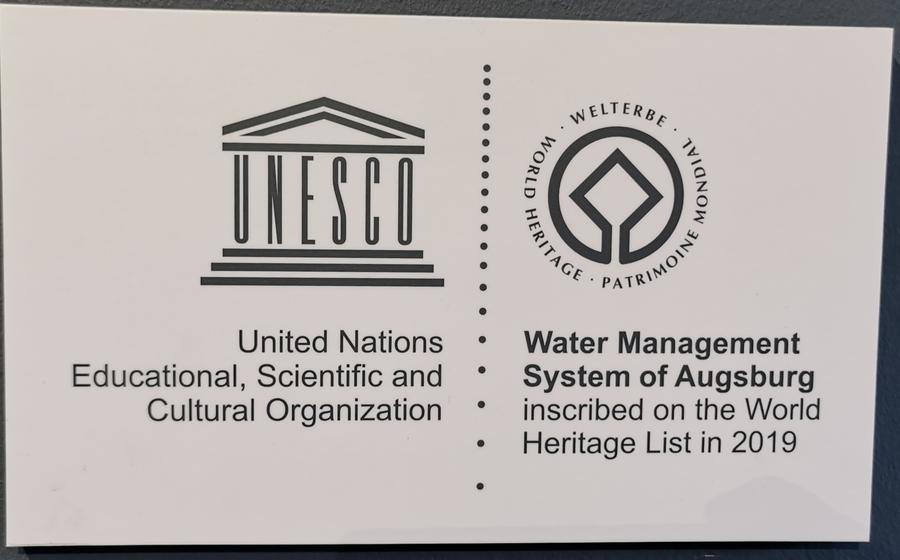
Augsburg Water Systems
- Water Management in Augsburg
- Augsburg's Water Towers: Architectural Landmarks and Historical Significance
- The Augsburg Water Management Museum
- Location and accessibility
- Augsburg's Canals and Waterways: A Picturesque Urban Tapestry
- The Lech River
- The Augsburger Stadtbach
- The Augsburger Puppenkiste
- The Augsburg Zoo
- The Augsburg Cathedral
- The Fuggerei: A Legacy of Social Responsibility
- The Schaezlerpalais
- The Maximilianmuseum: A Journey Through Augsburg's Past
- The Brecht Festival: Celebrating the Bard of Augsburg
- Insider Tip: The Stadtmarkt
Water Management in Augsburg
Augsburg's water systems, a testament to the city's rich history of water management, have played a crucial role in its development and prosperity. From its earliest days as a Roman settlement to its emergence as a trade and industrial center, water has been an integral part of Augsburg's story.
In the Middle Ages, Augsburg's water management systems were vital for providing clean drinking water, fighting fires, and powering mills. The city's canals and water towers, constructed during this period, were engineering marvels that showcased the city's expertise in water management.
In the 19th century, Augsburg's water systems underwent significant modernization, with the construction of new water treatment facilities and the expansion of the city's water distribution network. This allowed the city to meet the demands of its growing population and support its industrial development.
Today, Augsburg's water systems continue to play a vital role in the city's daily life and sustainable development. The city's water treatment plants provide clean drinking water to over 250,000 people and its hydroelectric power plants generate renewable energy for the city's homes and businesses.
Augsburg's water management systems are not only a source of pride for the city but also a reminder of the importance of water as a resource and the need to manage it sustainably. The city's commitment to water conservation and sustainable water management practices ensures that future generations will continue to benefit from this precious resource.
Augsburg's Water Towers: Architectural Landmarks and Historical Significance
Augsburg's water towers, with their distinctive architectural styles, stand as proud symbols of the city's rich history and engineering prowess. Constructed between the 16th and 18th centuries, these towers played a crucial role in the city's water supply system, providing a reliable source of clean water to the growing population.
The Wasserturm am Roten Tor, built in 1550, is the oldest surviving water tower in Augsburg. With its imposing brick structure and elegant Renaissance design, it served as a symbol of the city's wealth and power. The Wasserturm am Perlachturm, constructed in 1610, is another architectural gem. Its slender tower, adorned with intricate carvings and topped with a copper dome, reflects the transition from Renaissance to Baroque architectural styles.
These water towers not only provided a reliable water supply but also showcased the city's commitment to innovation and engineering. The Wasserturm am Jakobertor, built in 1718, is a testament to this. Its innovative use of lead pipes to distribute water throughout the city marked a significant advancement in water management at the time.
Today, these water towers stand as architectural landmarks, offering visitors a glimpse into Augsburg's rich history and engineering achievements. While they no longer serve their original purpose, they continue to captivate visitors with their beauty and historical significance. Guided tours and exhibits provide visitors with an opportunity to learn more about the history and significance of these iconic structures.
The Augsburg Water Management Museum
Located in the heart of Augsburg, the Water Management Museum is a must-visit for anyone interested in the city's unique water systems. Through interactive exhibits, guided tours, and workshops, the museum provides a comprehensive overview of Augsburg's water technology and history.
The museum's exhibits showcase the ingenuity and engineering prowess of Augsburg's water masters, who developed innovative solutions to manage the city's water resources. Visitors can learn about the construction of the water towers, the operation of the city's canals, and the importance of water for the city's industries.
In addition to the permanent exhibits, the museum also hosts temporary exhibitions on various water-related topics. These exhibitions often feature cutting-edge research and innovative technologies in water management.
The Water Management Museum is a great place for families, school groups, and anyone interested in learning more about Augsburg's water heritage. Guided tours are available in English and German, and the museum offers educational programs tailored to different age groups.
Location and accessibility
The Augsburg Water Management Museum is located at Auf dem Rain 7, in the heart of Augsburg's historic city center. It is easily accessible by public transportation, with several bus and tram lines stopping nearby. The museum is open Tuesday to Sunday from 10 am to 5 pm.
Admission to the museum is free of charge. However, donations are welcome to support the museum's ongoing work in preserving and promoting Augsburg's water heritage.
Augsburg's Canals and Waterways: A Picturesque Urban Tapestry
Augsburg's canals and waterways form an intricate network that weaves its way through the city's historic center, creating a picturesque urban tapestry. These waterways, once vital for trade and transportation, now serve as a testament to Augsburg's rich history and engineering prowess.
The canals, fed by the Lech River, were constructed over centuries to provide water for mills, power factories, and irrigate the surrounding countryside. They also played a crucial role in the city's defense, serving as moats and barriers against potential invaders.
Today, these canals and waterways offer a unique perspective on Augsburg's past and present. Visitors can take a leisurely boat tour or kayak along the tranquil waters, passing under historic bridges and admiring the colorful facades of the buildings that line the banks. Riverside walks and bike paths provide further opportunities to explore these charming waterways and the abundant wildlife that calls them home.
The canals and waterways of Augsburg are not just a reminder of the city's past, but also a symbol of its commitment to sustainability and green urban development. They provide a natural habitat for various plants and animals, contributing to the city's biodiversity. The canals also help regulate the city's microclimate, providing a cooling effect during hot summer months.
As you stroll along the canals, be sure to take a moment to appreciate the intricate waterwheels that once powered mills and factories. These beautifully preserved remnants of Augsburg's industrial heritage add a touch of nostalgia to the modern cityscape.
One of the most popular canals is the Stadtbach, which flows through the heart of the city. Along its banks, you'll find picturesque bridges, cascading waterfalls, and charming waterside cafes. The Stadtbach is a popular spot for locals and tourists alike, who come to relax and soak in the unique atmosphere of this historic waterway.
Whether you choose to explore Augsburg's canals and waterways by boat, kayak, or on foot, you're sure to be captivated by their beauty and serenity. These tranquil waterways offer a unique glimpse into the city's rich history and its commitment to sustainable urban development.
The Lech River
The Lech River, a natural gem flowing through Augsburg, offers a harmonious blend of scenic beauty and ecological significance. Its crystal-clear waters, meandering through the picturesque landscapes, create a serene atmosphere that invites visitors to immerse themselves in nature's tranquility. Whether you seek adventure or relaxation, the Lech River has something to offer.
Recreational opportunities abound along the river, inviting visitors to embrace the outdoors. Swimming, fishing, and boating are popular activities that allow you to experience the river's refreshing waters and serene ambiance. As you glide along the river's surface, take in the stunning views of the surrounding countryside, where lush meadows, rolling hills, and dense forests paint a vibrant tapestry of colors.
Augsburg's rich history is intertwined with the Lech River, which served as a vital trade route and transportation corridor for centuries. Historic bridges gracefully span the river, connecting different parts of the city and adding to its architectural charm. One such bridge, the Lechbrücke, stands as a testament to the city's medieval heritage, transporting visitors back in time as they traverse its ancient stones.
A highlight of the Lech River within Augsburg is the Lechfall, a scenic waterfall that cascades over a series of rocks, creating a mesmerizing spectacle. The thunderous roar of the water and the mist that rises from the falls create a captivating atmosphere that leaves visitors in awe. Whether you choose to admire the falls from a distance or venture closer to experience their power firsthand, the Lechfall is a must-see natural attraction in Augsburg.
The Augsburger Stadtbach
The Augsburger Stadtbach is a network of man-made canals flowing through the heart of the city. Constructed over centuries, the Stadtbach played a crucial role in Augsburg's water supply and industrial development. Today, it serves as a picturesque reminder of the city's rich history and engineering prowess.
The Stadtbach's origins can be traced back to the 13th century when Augsburg's growing population necessitated a reliable water source. The city's engineers diverted water from the Lech River into a series of canals, which were then used to power mills, supply drinking water, and flush away waste. Over time, the Stadtbach became an essential part of Augsburg's infrastructure, supporting the city's textile, paper, and metalworking industries.
In the 19th century, the Stadtbach underwent significant modernization. The canals were covered over, and the water was diverted into underground pipes. This allowed for the construction of new buildings and roads, transforming Augsburg into a modern industrial city. However, the Stadtbach's cultural and historical significance was not forgotten. In the 1970s, sections of the canals were reopened, and the Stadtbach was restored to its former glory.
Today, the Augsburger Stadtbach is a popular destination for locals and tourists alike. Visitors can stroll along the picturesque canals, admire the historic bridges and waterwheels, and enjoy the lively atmosphere of the city center. Guided tours and boat rides are also available, providing a unique perspective on Augsburg's water heritage.
The Augsburger Puppenkiste
The Augsburger Puppenkiste is a world-renowned puppet theater that has been enchanting audiences of all ages for over 70 years. Located in the heart of Augsburg, this beloved institution has become an integral part of the city's cultural landscape.
Founded in 1948 by Walter Oehmichen and his wife Rose, the Augsburger Puppenkiste began as a small, traveling theater company. Over the years, it grew in popularity and eventually found a permanent home in a charming half-timbered building in Augsburg's historic city center.
The theater's repertoire includes a wide range of productions, from classic fairy tales to contemporary stories. The performances are known for their intricate puppetry, colorful sets, and engaging storytelling. The theater also hosts regular workshops and educational programs, introducing children to the art of puppetry and encouraging their creativity.
One of the highlights of the Augsburger Puppenkiste is the museum, which showcases the history of puppetry and the theater's own productions. Visitors can admire a collection of over 2,000 puppets, as well as learn about the techniques and craftsmanship involved in creating these magical characters.
Insider Tip: Book your tickets in advance, especially for popular shows, as the Augsburger Puppenkiste is a popular attraction and tickets can sell out quickly.
The Augsburg Zoo
Augsburg Zoo is a compact yet diverse zoo that offers a captivating experience for visitors of all ages. Its primary focus is on species native to the region, providing a unique opportunity to learn about and observe the local wildlife. Educational programs and interactive exhibits enhance the zoo experience, making it both enjoyable and informative.
One insider tip for visitors is to plan their visit around feeding time. This is an exceptional opportunity to witness the animals in their most active state as they eagerly anticipate their meal. The zookeepers are knowledgeable and passionate about their work, and they often share interesting facts and anecdotes about the animals during feeding time.
Whether you're a family with young children or a nature enthusiast, Augsburg Zoo promises an engaging and educational experience. Immerse yourself in the wonders of the animal kingdom and gain a deeper appreciation for the incredible biodiversity of our region.
The Augsburg Cathedral
Augsburg Cathedral, a magnificent edifice of Gothic architecture, stands as a testament to the city's rich religious and historical heritage. Constructed over several centuries, from the 11th to the 15th, the cathedral boasts an awe-inspiring blend of architectural styles. Its soaring spires, intricate carvings, and stained-glass windows create an atmosphere of awe and reverence.
Inside, the cathedral's vast interior captivates visitors with its grand scale and exquisite details. The nave, with its lofty columns and ribbed vaults, leads to a stunning chancel adorned with elaborate altars and sculptures. The cathedral's treasury houses a collection of precious artifacts, including sacred relics, liturgical objects, and intricate goldsmith works.
Beyond its religious significance, Augsburg Cathedral holds a prominent place in the city's history. It served as a center of power and influence for the prince-bishops of Augsburg, who ruled over the city for centuries. The cathedral witnessed numerous important events, including imperial coronations, religious councils, and the signing of the Peace of Augsburg in 1555, which granted religious freedom to Protestants in the Holy Roman Empire.
Today, Augsburg Cathedral remains a vibrant place of worship and a popular tourist attraction. Visitors can admire its architectural splendor, explore its rich history, and attend regular services or concerts held within its sacred walls. For those seeking a truly unforgettable experience, climbing the cathedral tower rewards with breathtaking panoramic views of the city and the surrounding countryside.
The Fuggerei: A Legacy of Social Responsibility
Immerse yourself in the heart-warming tale of the Fuggerei, the world's oldest social housing complex, nestled within the historic city of Augsburg. Founded in 1521 by the philanthropic Fugger family, this extraordinary enclave has stood the test of time, providing affordable housing to low-income residents for over 500 years.
Step back in time as you wander through the cobbled streets of the Fuggerei, where 140 small, yet cozy apartments line the picturesque alleyways. Each dwelling is lovingly adorned with flowers and window boxes, reflecting the pride and care of its inhabitants.
Discover the fascinating history of the Fuggerei through guided tours that unveil the stories of its past residents, from humble weavers to skilled craftsmen. Learn about the Fugger family's vision for social responsibility and their enduring commitment to providing dignified living spaces for those in need.
As you explore the Fuggerei, be sure to visit the Fuggerei Museum, which offers a deeper dive into the complex's history and its significance as a model for social housing worldwide. Delve into interactive exhibits, historical documents, and personal accounts that bring the Fuggerei's legacy to life.
Remember to respect the privacy of the residents as you wander through the Fuggerei. While photography is permitted in the common areas, please be mindful of the residents' right to peace and tranquility within their homes.
Insider Tip:
To fully immerse yourself in the Fuggerei experience, plan your visit during one of the many cultural events and festivals held throughout the year. These events often feature traditional music, dance, and culinary delights, offering a glimpse into the vibrant community spirit that thrives within the Fuggerei's walls.
The Schaezlerpalais
The Schaezlerpalais is a magnificent Rococo palace located in the heart of Augsburg. Built in the 18th century as the residence of the Schaezler family, wealthy merchants, and art collectors, it now serves as a museum showcasing their extensive collection of paintings, sculptures, and furniture.
The Schaezlers were passionate about art and amassed a vast collection that reflects their discerning taste and cultural patronage. The palace's grand halls and opulent rooms provide a stunning backdrop for these treasures, creating an immersive experience for visitors.
Among the highlights of the collection are works by renowned artists such as Raphael, Rubens, and Tiepolo. The Gemäldegalerie (Picture Gallery) features exquisite paintings from various periods and genres, while the Skulpturensammlung (Sculpture Collection) displays elegant marble and bronze sculptures. The Mobiliarsammlung (Furniture Collection) showcases fine examples of Rococo furniture and decorative arts.
In addition to the permanent collection, the Schaezlerpalais also hosts temporary exhibitions on various art-related topics. These exhibitions often feature works by contemporary artists, providing a fresh perspective on art and its evolution.
Insider tip: The palace also hosts cultural events, such as concerts, lectures, and workshops. Check the museum's website for upcoming events and plan your visit accordingly to make the most of your experience at the Schaezlerpalais.
The Maximilianmuseum: A Journey Through Augsburg's Past
Discover the rich history and vibrant culture of Augsburg at the Maximilianmuseum, a treasure trove of local heritage. Immerse yourself in the city's intriguing past, from its Roman origins to its role as a medieval trade center and its industrial prowess. Through engaging exhibits, interactive displays, and multimedia presentations, the museum brings to life the stories and achievements of Augsburg's people, industries, and cultural movements.
Highlights of the Maximilianmuseum:
-
Explore the museum's permanent collection, which boasts artifacts, paintings, and sculptures that showcase Augsburg's artistic heritage and craftsmanship.
-
Learn about the city's Roman roots and its transformation into a thriving trade center during the Middle Ages. Discover the significance of the Fugger family, whose wealth and influence shaped Augsburg's economic and cultural landscape.
-
Delve into Augsburg's industrial legacy, from its textile and metalworking industries to its role in the automotive and aerospace sectors. Witness the city's transformation into a modern economic powerhouse.
Insider Tip:
-
Enhance your visit by joining a guided tour, available in English and German, to gain deeper insights into Augsburg's history and the museum's collection.
-
Check the museum's website for information on temporary exhibitions, workshops, and special events that delve into specific aspects of Augsburg's past and culture.
-
Combine your visit to the Maximilianmuseum with a stroll through the city center to admire the architectural landmarks that tell the story of Augsburg's rich heritage, from the Roman city wall to the opulent Renaissance townhouses.
The Brecht Festival: Celebrating the Bard of Augsburg
Augsburg proudly hosts the annual Brecht Festival, a cultural extravaganza paying homage to its native son, Bertolt Brecht, a towering figure in the world of theater and poetry. This vibrant festival brings together an international community of artists, scholars, and theater enthusiasts to celebrate Brecht's enduring legacy. Over several days, the city transforms into a stage, hosting captivating performances, thought-provoking readings, and insightful discussions of Brecht's groundbreaking works. Experience the power of Brecht's words come alive as renowned actors bring his characters to life, delving into the depths of human nature and challenging societal norms. Don't miss the chance to immerse yourself in Brecht's provocative and poetic world at this unmissable festival. Insider tip: Secure your tickets well in advance, as the Brecht Festival is a highly sought-after event.
Insider Tip: The Stadtmarkt
Amidst the historic charm of Augsburg, the Stadtmarkt (City Market) stands as a vibrant hub of local life and commerce. Situated in the heart of the city, this bustling square transforms into a lively marketplace every Saturday, drawing locals and visitors alike with its irresistible allure.
Step into the Markt and immerse yourself in a kaleidoscope of colors, sounds, and aromas. Fresh produce, arranged in vibrant displays, beckons you to indulge in the bounty of the region. From crisp apples and juicy berries to artisanal cheeses and freshly baked bread, the Markt offers a feast for the senses.
Browse the stalls manned by passionate vendors, each eager to share their stories and the secrets behind their products. Sample regional delicacies, such as the iconic "Augsburger Kiechle," a sweet pastry filled with fruit preserves, or savor the smoky flavor of grilled sausages, a staple of Bavarian cuisine.
As you wander through the Markt, take a moment to appreciate the surrounding architecture. The square is framed by historic buildings, their facades adorned with intricate details that speak to Augsburg's rich past. The Rathaus (Town Hall), with its Renaissance-style grandeur, stands as a testament to the city's proud heritage.
The Markt is not just a place for shopping; it's a place for gathering, connecting, and celebrating. Street performers entertain the crowds with their music and acrobatics, while food stalls tempt you with mouthwatering aromas. Join the locals as they sip on a refreshing Maß (liter) of beer and savor the convivial atmosphere that permeates the air.
Insider tip: Arrive early to secure the best selection of produce and handmade crafts. The Markt is busiest on Saturdays, but it's also open on weekdays, offering a quieter and more relaxed shopping experience.
